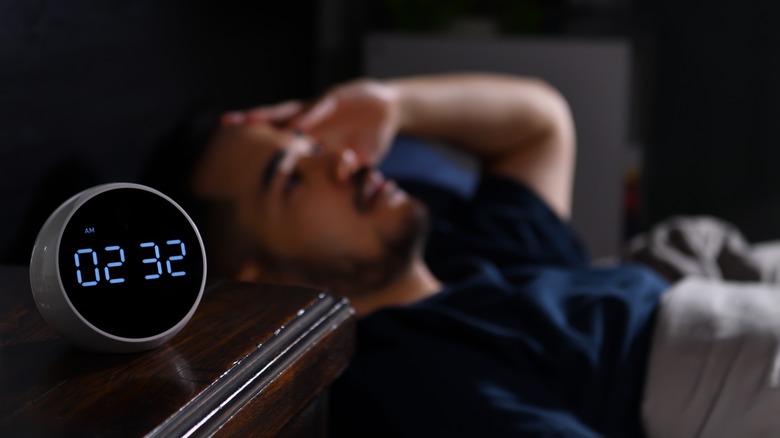Study Finds Link Between Your Circadian Rhythm And Your Most Painful Headaches
On any given day, nearly 16% of people around the globe experience a headache, according to 2022 research published in The Journal of Headache and Pain. However, different types of headaches can present differently, from tension headaches to migraines, cluster headaches, menstrual headaches, hypnic headaches, and more (via Medical News Today).
Different kinds of headaches can be provoked by any number of different things, including bright lighting, shifts in the weather, stress, or even certain scents. Now, a systematic review recently published in the scientific journal Neurology has found that the body's sleep-wake cycle — otherwise known as our circadian rhythm — may influence at what point during the day or night one might experience cluster or migraine headaches.
Each of these two kinds of headaches can take a heavy toll on the body. The first type, cluster headaches, are a recurrent type of headache characterized by a severe sharp pain or burning sensation localized to one eye. The pain of a migraine is less sharp, but feels more like a painful throbbing that targets one side of the head.
The genetic component of headaches and circadian rhythm
The review included data from over 70 different studies analyzing the relationship between circadian rhythm and headache disorders. While a link between the body's circadian rhythm and cluster headaches had already been previously established, lead study author Dr. Mark Burish told NBC News that they were surprised to find that migraines also appear to have a similar connection.
Cluster headaches were more often experienced by patients between late-night hours and early-morning hours. However, migraine frequency turned out to be somewhat opposite. While the majority of migraine headaches were found to occur during the morning, day, or evening hours, far fewer were observed in the hours between 11 p.m. and 7 a.m. Furthermore, both types of headaches were found to occur more often throughout the spring and fall months of the year.
The study findings also pointed to the potential role that genetics may play in this relationship. Specifically, researchers identified an overlap of five out of nine genes that were responsible for both cluster headaches as well as circadian rhythm regulation. Similarly, 110 genes were found to be associated with both migraine headaches and circadian rhythm.
While more research is still needed, such findings may be influential in the future treatment of headache disorders. "Medications that target the circadian cycle might be a new type of treatment we can offer these patients," Dr. Burish told NBC News.


